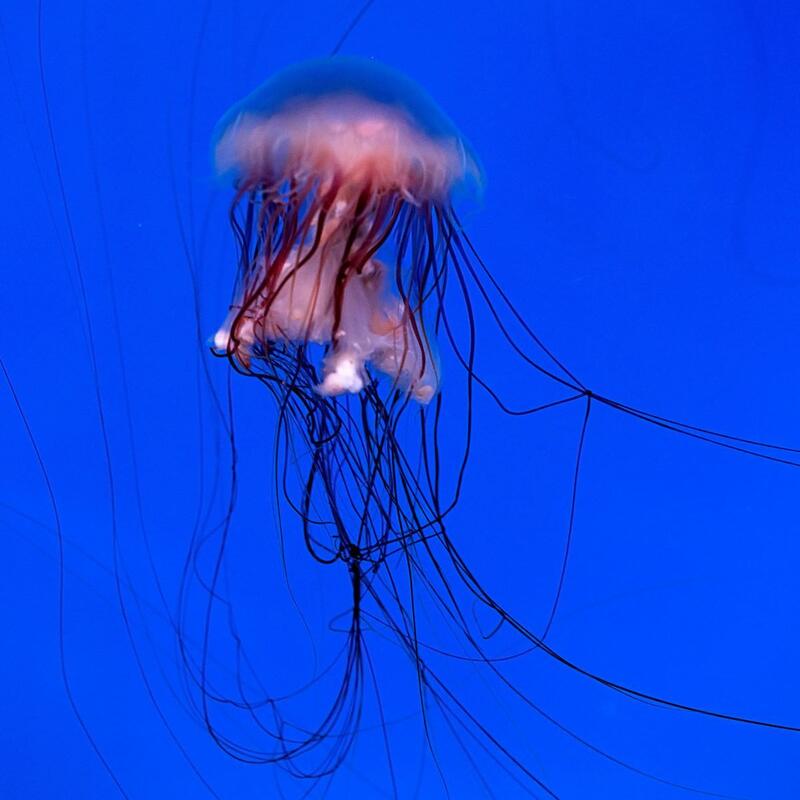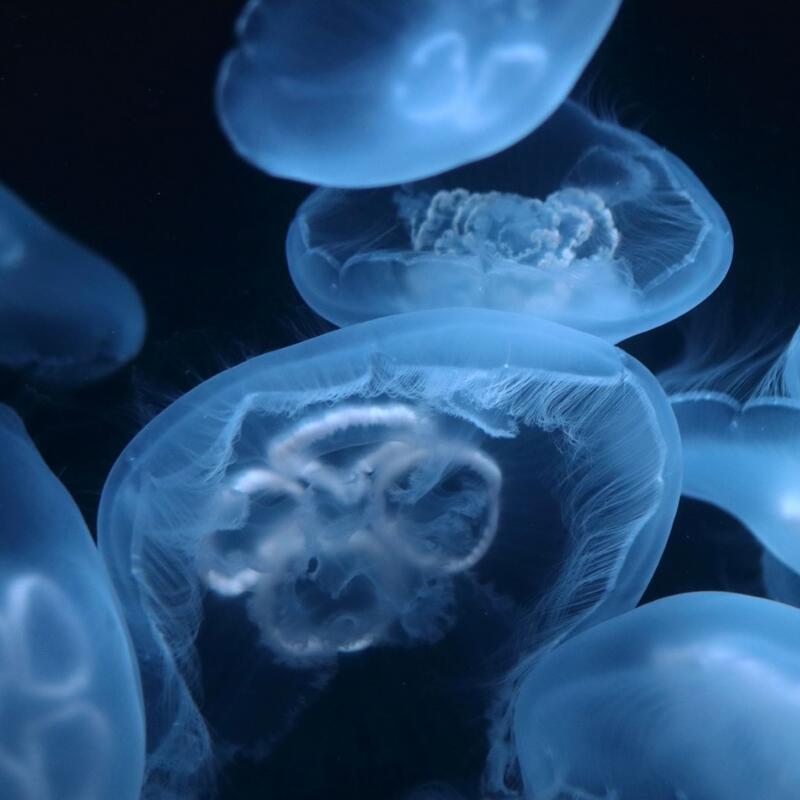Aquarists of the Primorsky Aquarium have tackled a challenging task: they managed to breed one of the largest jellyfishes in the world, lion’s mane (Cyanea capillata). Its bell reaches 2 meters in diameter and its tentacles are up to 30 meters long.
There are hundreds of jellies in the tanks of the Primorsky Aquarium, and their slow undulating movements are captivating, mesmerizing and relaxing. These most ancient multicellular creatures have lived on the Earth for more than 600 million years and therefore they are the first live animals visitors meet at the start of the Aquarium’s exhibition route, in the Evolution of Life in the Ocean exhibit. A fun fact about the upside-down jellyfish Cassiopea аndromeda: it harbors zooxanthellae, photosynthetic dinoflagellate algae that provide food to their host. The amount of the algae inside the body influences its color, as well as the feeding behavior and even the ability to reproduce.
Despite the considerable age of this species and the other members of the class Scyphozoa, the life span of each individual isn’t that long, ranging only several months to one year. Hence, the constant need for new jellies in the exhibits and the breeding program.
Jellyfish reproduce in quite an unusual way. The process is divided into two stages, sexual and asexual. During the sexual stage, jellyfish produce gametes, sperm and eggs. An egg fertilized by sperm develops into a planula, a free-swimming larva. After several days, it attaches to a firm surface and transforms into a polyp.
The polyp reproduces asexually by cloning itself, or strobilation. The juvenile jellyfish that appear during strobilation are called ephyrae. These delicate creatures resembling snowflakes grow into adult jellies.
Over a number of years, the Primorsky Aquarium has been successfully breeding three species: the moon jelly Aurelia coerulea, the fried egg jellyfish Cotilorhiza tuberculata and the upside-down jellyfish Cassiopea аndromeda.
On the top of that, the aquarists have now received the offspring from the lion’s mane Cyanea capillata. They managed to create the environment which is very similar to that in the sea in springtime. As the water temperature is rising and the sea ice is melting, the Cyanea polyps start to bud. By adjusting temperature and salinity levels, the aquarists provided the jellyfish with proper conditions for reproduction.
We are happy to invite visitors to our Evolution of Live in the Ocean and Sea of Japan/East Sea exhibits, where they will both enjoy the sight of floating jellies and have a relaxation session!








.jpg)
.jpg)